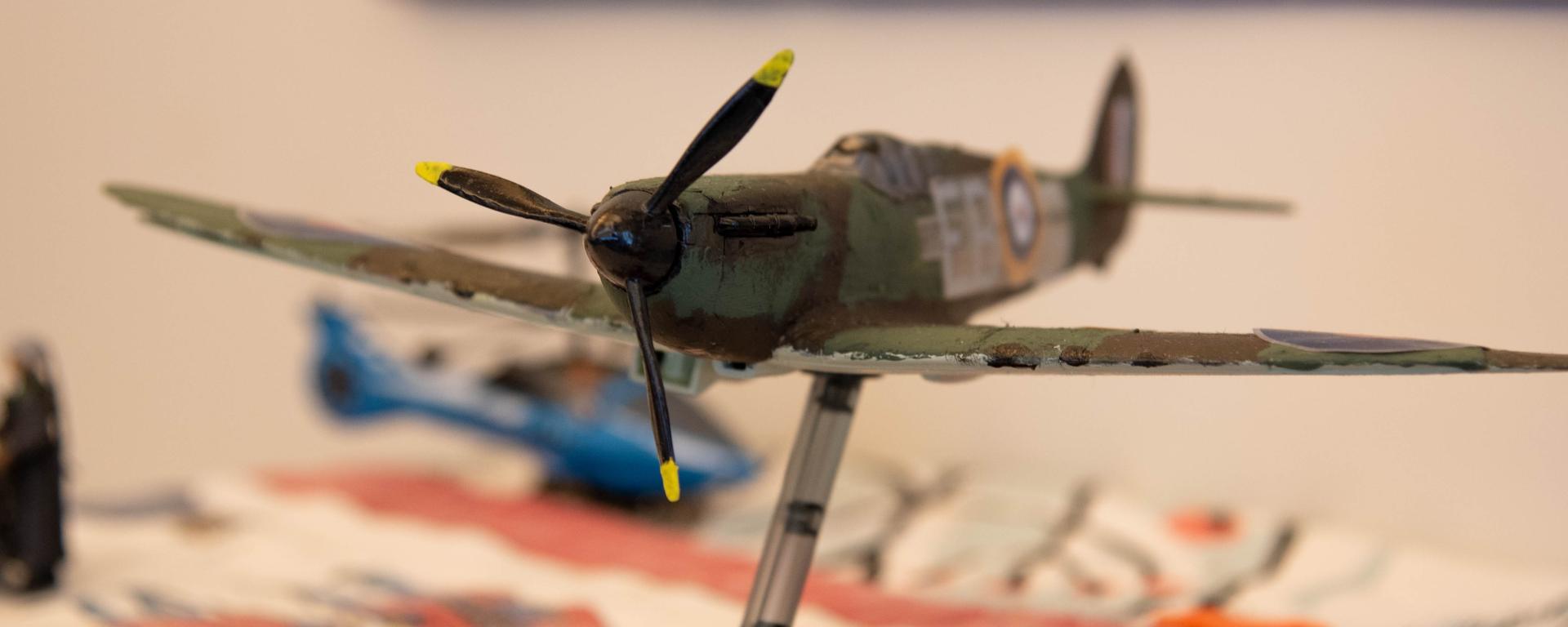The Healing Power of Art: Chelsea Pensioner, Tony, shares how art has helped him in later life and how the Royal Hospital is expanding art in the community
Chelsea Pensioner, Tony, joined the Royal Army Medical Corps as a Junior Leader aged 15. Over the next twelve years, he completed service in the UK, Germany, Northern Ireland and a battlegroup exercise in Canada. After leaving the Army, Tony qualified as a nurse and worked across the children’s ward, maternity, casualty and psychiatric unit throughout his career.
Since joining the Royal Hospital Chelsea in 2021, Tony has discovered a new passion – art. He shared more on how this creative outlet has benefitted his wellbeing.

"I love nature. I think it’s fascinating. I think that’s why I enjoy creating seascape pieces. This was a collage I did too. I find deepwater fish interesting, the colours are amazing. It’s like little lights that flash in the dark."
A Walk in Nature
Taking inspiration from his surroundings, Tony enjoys capturing landscapes he sees. One of the first paintings he produced was an interpretation of a beach front during a storm.
“I took my dogs for a walk one day along a beach near where my daughter lives. I discovered this spit of land which went along the edge of us. It was a stormy day, and we came to this rock. The dogs ran over it, so I followed them and there was this track that went down and down. Not through sand, but through rock bed. I was amazed by seeing the rock patches and because it was stormy, the waves were higher than me. It was quite a picture.
So, something I saw, I thought looked nice and that became my first painting. In my first paintings, you can see they’re quite dark. But they have gradually got lighter the more I paint.
Nature presents so many opportunities to work with colours. For example, autumn I would use bright oranges and yellows. Summer would be completely different. I enjoy using acrylics as you can build up the colours. I’m yet to venture into oil paints but I’m quite excited to try them.”
"I love colour! When I think about it, it’s a place I can get lost. I suffer with post-traumatic stress disorder and art has been a form of freedom for me."
Tony also enjoys model making alongside painting and sketching. From spitfires to tanks, he is much the perfectionist when it comes to producing miniature models of historic machinery.
“I am somebody who likes things to be as genuine as possible. The model I’ve just finished of a Spitfire came already painted. But it was too bright. The Air Force colours during the Second World War were dark browns and dark greens. So, I painted over it. Working with colour seems to be something that comes naturally to me. I don’t have to think about it. Most of my shirts are all covered in paint because I enjoy working with colour so much.”
"Before, I wouldn’t let people see my emotions. I tried to find ways of dealing with things but expressing myself was something I struggled with. Here, I’ve discovered art in different forms. Painting, pottery – you can make some crazy things in pottery. I love it! It’s enlightening. It’s freedom to express yourself and how you want to be expressed. It doesn’t take away all the darkness but it’s an outlet. It’s a form of freedom.”
“A form of escapism”
Art has been shown to be a useful therapy outlet for individuals suffering with PTSD. It has been used as an effective coping strategy in some cases and allows people to express their emotions freely.
Having been diagnosed with post-traumatic stress disorder, Tony says that art has greatly impacted his wellbeing. It has become an outlet for him to express his emotions and helps him build his confidence.
“I can escape into art. I find it very relaxing. You just put pencil on paper even if you don’t know what you’re going to do with it, and it will move itself. It helps me feel more confident too. I didn’t like showing people my work when I first started but now, I don’t mind so much. I’m more confident to show people.
“When we first went, we were given multiple art tools and told we could just start painting. It was amazing – we were getting responses from people who didn’t respond a lot of the time. But they were responding to the art. We were encouraged to use a lot of colours as a lot of the people with dementia appeared to respond to colours. It was fantastic!”
Art in the Community
The Royal Hospital Chelsea is committed to its work within the wider local community. Part of this has involved an ongoing collaboration with Loveday, an organisation offering compassionate care for people living with dementia. The most recent phase of the collaboration has seen Loveday members and members of the Chelsea Pensioner art and pottery groups, including Tony, come together with Loveday’s Artist in Residence, Grace Holliday, to explore each other’s homes through art.
Research has shown that art therapy can be beneficial to people living with dementia. It can provide stimulation and engage attention as well as create an outlet where they can express how they are feeling if they are unable to communicate verbally, for example. Creating art together also fosters a sense of community and offers the chance for social interaction to help people with dementia better communicate.
The Loveday collaboration will culminate in a public art exhibition called ‘Home’, debuting on World Alzheimer’s Day, 21 September 2024, in the new Soane Stable Yard.

